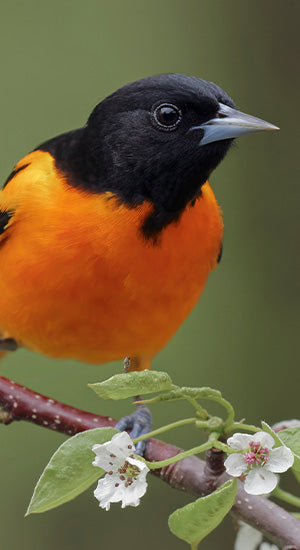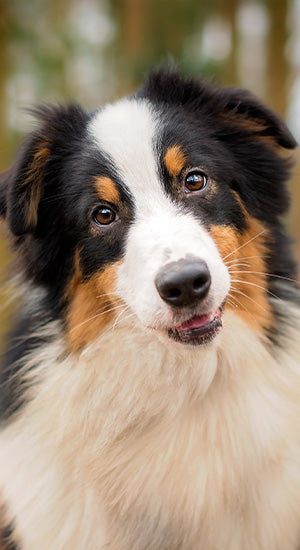Parrot Profile: Lineolated Parakeet

General Information
Lineolated Parakeets, more commonly known as Linnies or Barred Parakeets, are a small parrot native to Central America in the high mountains of South Mexico to West Panama. They live in flocks of 6-30 and camouflage well due to their wild green colouring. Linnies are able to withstand a wide range of temperatures and are quite common in aviculture.

Personality
Linnies are often nicknamed “apartment birds” due to their low volume and small size. They are not very destructive and are lower maintenance than other birds. Linnies are calm birds who enjoy sitting on your shoulder while you go about your day. They also love to explore and tend to walk more than they fly. A unique characteristic, Linnie’s sleep on their perch in a horizontal position! They also like to hold their food which is why a larger pellet is acceptable for this species. Linnies make great pets for beginner and first-time bird owners and can bond with multiple people, making them a great bird for families and children. Linnies are gentle and can mimic some words but aren’t the greatest talker.
Diet
Linnies eat throughout the day and love fruits and veggies, especially apples! As for a daily diet, Linnies eat a seed mix and can be transitioned to a pellet diet. If your Linnie is not on a pellet diet it is important to supplement the vitamins and minerals with fresh fruits and veggies and other enrichment foods.
Housing
Linnies do best in a cage that’s a minimum 18”x18”x24 and benefit from a lot of time outside of the cage to interact and bond with you. A common cage for Linnie’s is the Prevue Parakeet Cage. A variety of toys allows your bird to entertain itself while you are away. Destructible toys, plastic and metal toys and audible toys like bells can all be incorporated keeping in mind that every bird is different and may not like some of the toys you provide. Perches are also important as Linnies tend to walk more than they fly. Rope perches, natural wood and ladders are all great options for your Linnie’s cage. Linnies’ nails grow quite fast, so it is a good idea to have a cement perch to help sand down the nails so that grooming doesn't have to be done as often.
Care
Although Linnies are lower maintenance than other avian companions, they still need attention and affection from their owner to avoid feelings of neglect and to remain hand tame. Interacting with your Linnie doesn’t mean constant physical affection, they are more than happy to sit on your shoulder and chat in your ear while you go about your day. Linnies can be very cuddly birds and their small size makes it very easy to spend time with them during the day. Allowing at least one hour for your Linnie to be out of the cage and interacting with you will give them the affection and attention they need to keep them healthy and happy.
For more Linnie supplies, check out these products:
- Hulled Sunflower Seed Mix
- Parakeet Seed Mix
- Zupreem Pellet
- Higgins Pellet
- Toys
- Treats
- Travel Carrier
- Cage Cleaner
- Play Stand
Breeding
Horizontal nest boxes are preferred, but Linnies have used vertical nest boxes as well. For vertical boxes, 7"L x 71/8"W x 8 1/2"H is common and for horizontal boxes, 9 3/8" L x 6 1/8 " W x 6 3/8" H is often used. Prevue has vertical and horizontal nest boxes that are often used for Linnie breeding. The best nesting material for Linnies is shavings. The reason for this is that their nails grow so fast that using softer nesting material can be hazardous as they may get tangled in it. Linnies start breeding in the spring but if you keep them in a warm environment with good lighting, they will breed all year. Linnies lay 4-6 eggs per clutch and lay each egg every 24-48 hours. Incubation begins after the second egg has been laid. Incubation lasts 18-24 days and babies fledge at 5-7 weeks old.
Sexing
There are ways to determine a Linnie's gender by appearance, but they are not always effective and can only be used as an educated guess. To be sure of gender, a DNA test is more effective. One way of determining gender by appearance is the amount of black on the shoulders. Males typically have more black than females. Another way is to look for the black bars on the legs. Males have more defined bars than females. The last way to determine gender is by the amount of black on the tail. Males have more black than females.
Mutations
The wild (natural) colour for a Linnie is green. In captivity, mutations include green series and blue series. The blue series includes turquoise, cobalt, slate/mauve and creamino. The green series includes wild green, dark green, olive and lutino. Blue series is recessive to dominant green series and Ino mutations are sex-linked. Greywing is a mutation that can occur on both green and blue series and is sex-linked and incomplete dominant. Linnies can also be split, this means that they can carry a colour without expressing it. Females can only be split blue, and males can be split blue and ino (creamino, lutino)

Dark Factors
Dark factors determine the colour mutation of the Linnie. Dark factors are usually represented by D (single factor dark) and DD (double factor dark) and wild colour having no dark factors. Greywing exists as single factor and double factor. Females can only be single factor but look like a double factor. Males can be both single and double factor.
Inheritance
Reference: https://linniesociety.org/about-linnies/colors/
Recessive:A recessive trait will be masked by dominant traits unless the offspring inherits a copy of the recessive gene from BOTH parents.
Sex-Linked:
The Ino genes are sex-linked and an ino split may only be carried by a male bird. To have an Ino phenotype the offspring must inherit one copy of the ino gene from EACH parent. This may happen, e.g. by breeding a Green split ino Male X Lutino Female. Greywing mutations are also sex-linked but in a different manner.
Incomplete Dominance:
Incomplete dominance occurs in the Greywing mutation. Incomplete dominance basically refers to the expression of the phenotype. The main trait (Green, D Green, DD Green, Turquoise, etc.) is not able to be fully expressed and the bird’s overall colour appears mildly or largely diluted.










